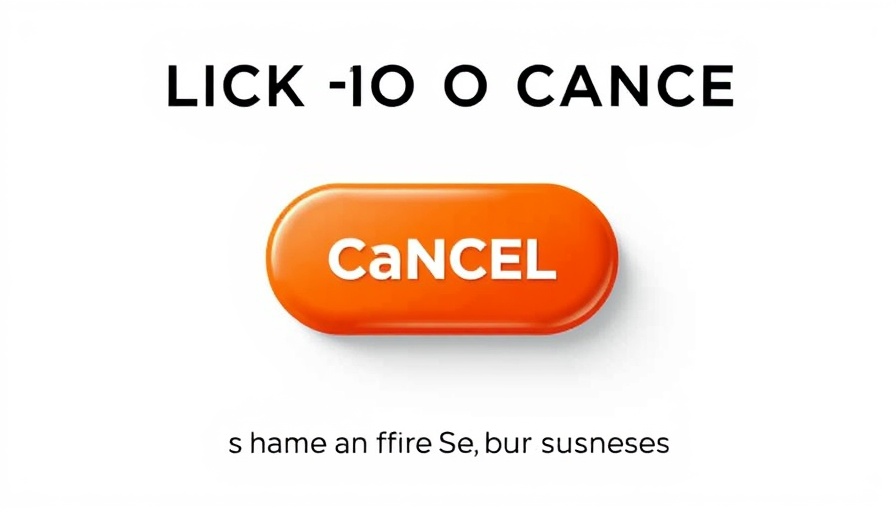
Understanding the FTC's Click-to-Cancel Rule
This month, the new "Click-to-Cancel" rule by the Federal Trade Commission (FTC) takes effect, ushering in significant changes for subscription-based services. This regulation mandates that businesses provide a simple and effective way for customers to cancel their subscriptions online, mirroring the ease with which they can sign up. The implications of these rules could significantly reshape how SaaS businesses engage customers and manage subscriptions.
Why Is This Change Necessary?
Historically, many subscription models have been criticized for employing tactics that make cancellation difficult. Long cancellation forms, hidden links, and confusing navigation pathways often trap customers who want to disengage. The FTC aims to rectify this by mandating clarity in the cancellation process, enhancing consumer protection. By facilitating easier exits, companies also foster a culture of trust and transparency, critical in today's market.
Key Components of the Rule
The Click-to-Cancel rule requires that customers can unsubscribe using the same method they used while subscribing, often through a single click online. Further stipulations state that businesses must not only provide the cancellation option but must make it prominent on their interfaces. This is a significant shift aimed at leveling the playing field for consumers.
Impacts on SaaS Business Operations
For SaaS businesses, this rule changes the landscape of customer acquisition and retention. Although it may initially appear burdensome, adopting a customer-centric cancellation policy could lead to higher customer satisfaction and loyalty. Companies that are proactive and transparent about these changes can effectively turn potential negatives into positives by emphasizing their commitment to customer care.
Strategic Adjustments for Marketing Teams
Marketers within SaaS have an opportunity to leverage this regulatory shift. By turning cancellation experiences into feedback opportunities, they can enhance product offerings based on customer insights. Additionally, utilizing email marketing tactics to maintain engagement can help retain customers even after cancellation, such as offering discounts, educational content, or trial extensions.
Looking Ahead: Trends in Marketing Automation
With this rule in mind, it is vital for SaaS businesses to enhance their marketing automation strategies. By utilizing tools that enable seamless transitions during a cancellation, marketers can craft personalized messages that resonate with customer's past experiences. Automation can also help ensure that follow-up emails are timely and relevant, assisting in tracking customer sentiments and improving retention strategies.
The Broader Context: Digital Marketing Trends
As we observe the implementation of the Click-to-Cancel rule, it coincides with broader digital marketing trends that emphasize user experience and transparency. Marketers need to adopt practices that resonate with these shifts, such as improving online interfaces, focusing on customer engagement strategies, and optimizing the overall customer journey.
Final Thoughts: Embracing Change in an Evolving Digital Landscape
The new click-to-cancel rule symbolizes a shift towards more responsible business practices in an increasingly digital world. By embracing this change, SaaS businesses not only comply with regulations but also align their practices with evolving consumer expectations. This proactive approach can distinguish them in a competitive marketplace, ensuring that they not only attract new clients but retain existing ones.
In light of these changes, SaaS professionals and marketers need to stay ahead of the curve by continually adapting to new customer feedback, refining their strategies, and investing in customer experience. As we navigate this regulatory landscape, let’s harness these changes as an opportunity for growth and improvement.
 Add Row
Add Row  Add
Add 




Write A Comment